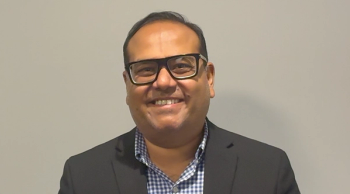
How Do Cardiovascular Risks Change Over Time in Breast Cancer Survivors?
In this study, researchers evaluated changes in CVD risk factors and 10-year CVD risk from before to after a breast cancer diagnosis, and compared it with women who remained free of such a diagnosis.
A new study found that changes in cardiovascular disease (CVD) risk and associated risk factors over time were similar among women with a breast cancer diagnosis and those without breast cancer. There were some differences in these changes between pre- and postmenopausal women.
“CVD is a key contributor to mortality among women with breast cancer, and is the leading cause of death for women with ductal carcinoma in situ or stage I disease, and for women aged ≥ 80 years with stage II disease,” wrote study authors led by
In the new study, researchers evaluated changes in CVD risk factors and 10-year CVD risk from before to after a breast cancer diagnosis, and compared it with women who remained free of such a diagnosis. The results were
They included a total of 813 women with a breast cancer diagnosis and 1,049 women without one; all were enrolled in the National Institute of Environmental Health Sciences Sister Study cohort. The average age at enrollment was 47.6 years among premenopausal women with a breast cancer diagnosis and 46.6 years among premenopausal women with no diagnosis; among postmenopausal women, the average ages were 59.2 years and 58.3 years, respectively.
The median time from enrollment to a second home visit was 7.8 years. Among premenopausal women, neither CVD risk nor any of the CVD risk factors studied differed between those with and without breast cancer at either enrollment or at the second visit. The 10-year CVD risk increased by 2.7% and 2.8%, respectively, among those with and without a breast cancer diagnosis (P = .867). Changes to weight, BMI, waist circumference, and systolic blood pressure were also similar.
Among those who were postmenopausal at the time of study enrollment, there were some small differences between the groups. The increase in systolic blood pressure was smaller among those diagnosed with breast cancer and treated with chemotherapy without endocrine therapy than those with no diagnosis (0.3 mm Hg vs 4.8 mm Hg; P = .036). Generally though, the changes were again similar regardless of breast cancer status. The 10-year CVD risk rose by 4.0% among those with a breast cancer diagnosis, and by 4.5% in those without.
“Among women with a breast cancer diagnosis, the risk of CVD is an important long-term health concern,” the authors wrote. “In the current study, changes over time in 10-year CVD risk, adiposity measures, and blood pressure were found to be similar between women who developed an incident breast cancer and those who did not, suggesting that changes in common risk factors may not explain the increase in CVD mortality reported among survivors of breast cancer.”
“I don’t think these results affect how we monitor breast cancer survivors,” Fradley said. “If they have exposures to anthracyclines, trastuzumab, and/or left breast radiation, we must remain vigilant in our evaluation of the development of cardiovascular disease.”
Newsletter
Stay up to date on recent advances in the multidisciplinary approach to cancer.





















































































